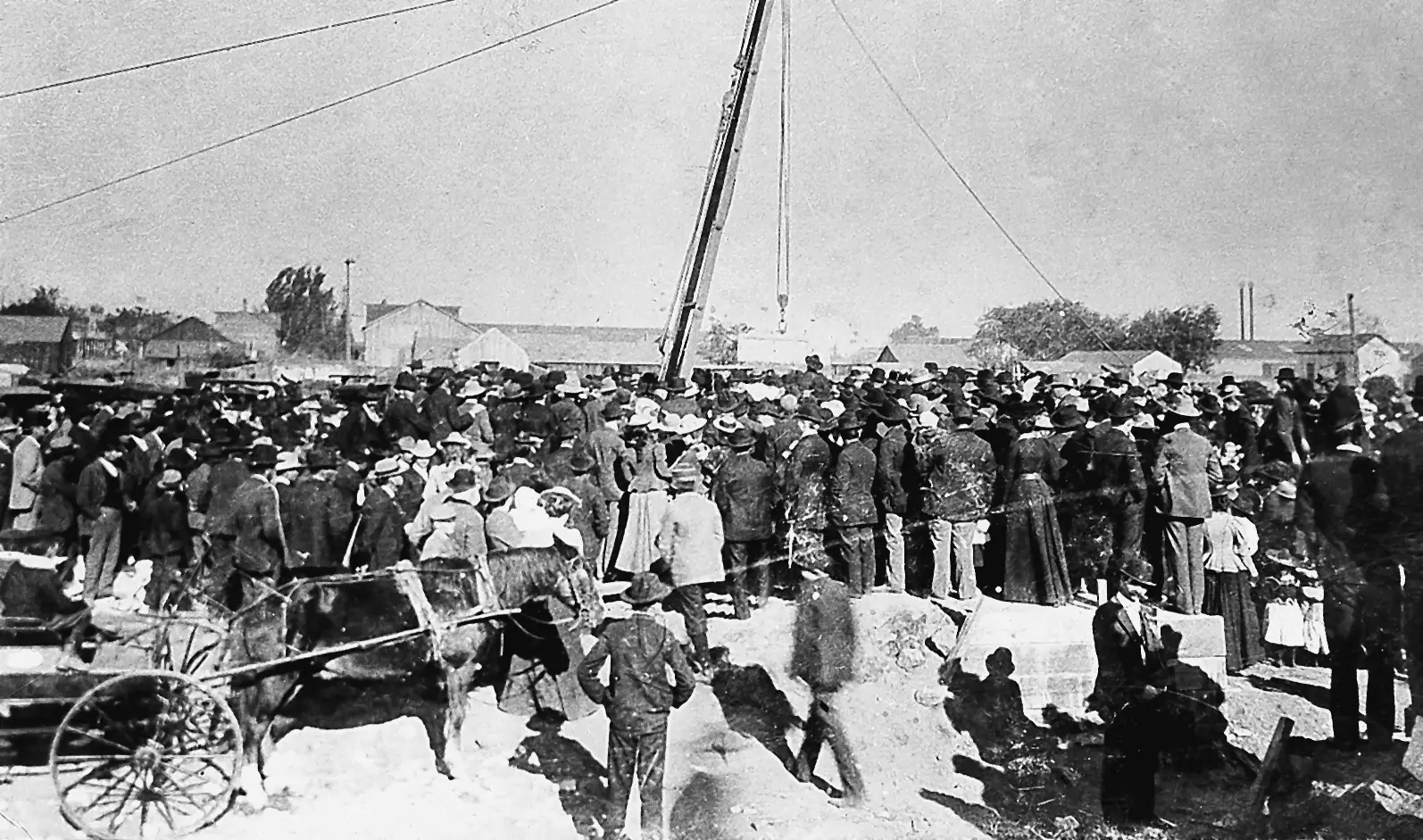At the turn of the 20th century, Madera finally began to build a courthouse. Prior to that, county business was done at various offices on Yosemite Avenue. This 1900 photograph shows the crowd assembled for the laying of the cornerstone of the new courthouse. The building was constructed with granite brought down from Raymond. Among other things, the cornerstone contains a roll of Confederate money.
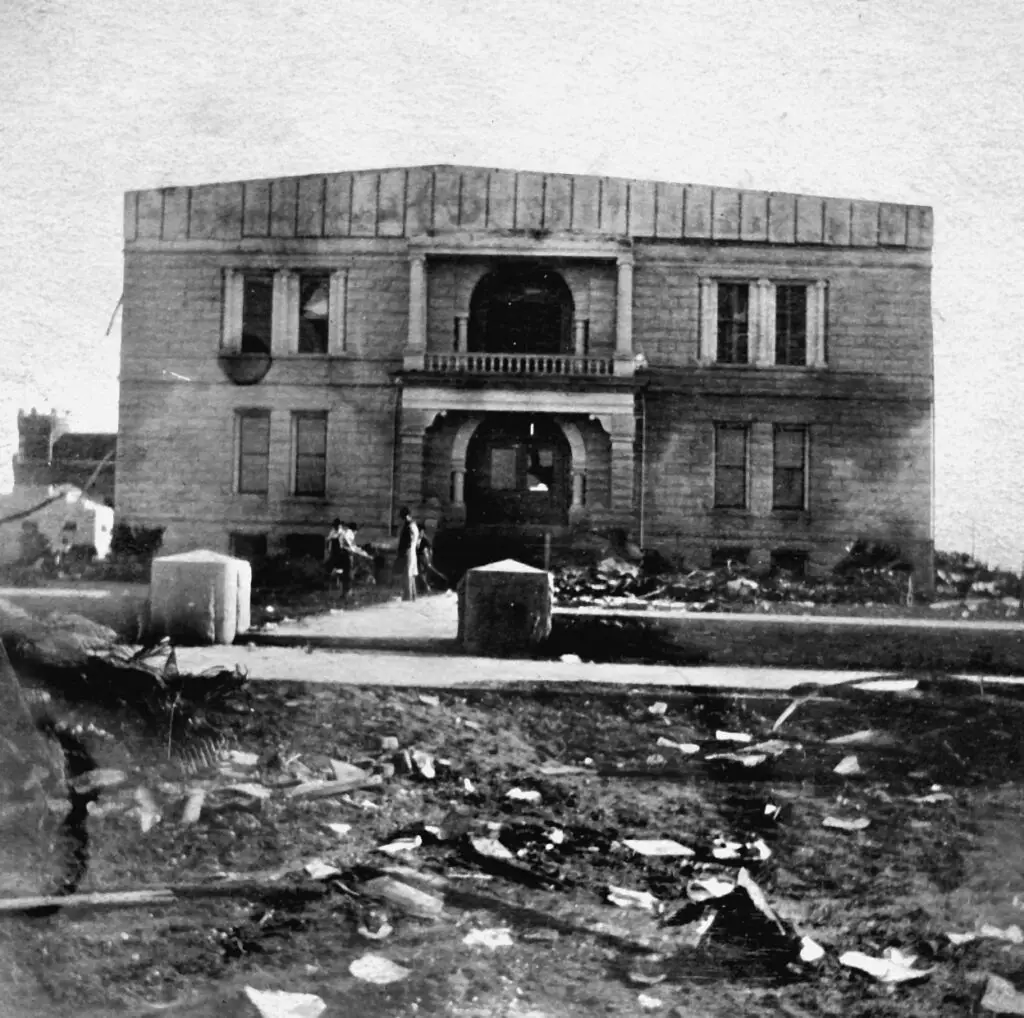
For two years, Maderans watched as pieces of granite were laid in place and their new courthouse began to take place. The land on which the courthouse was built was given to the county by Thomas E. Hughes. Although he was known as the “Father of Fresno,” Hughes promoted Madera as well, since he was a major landowner here.
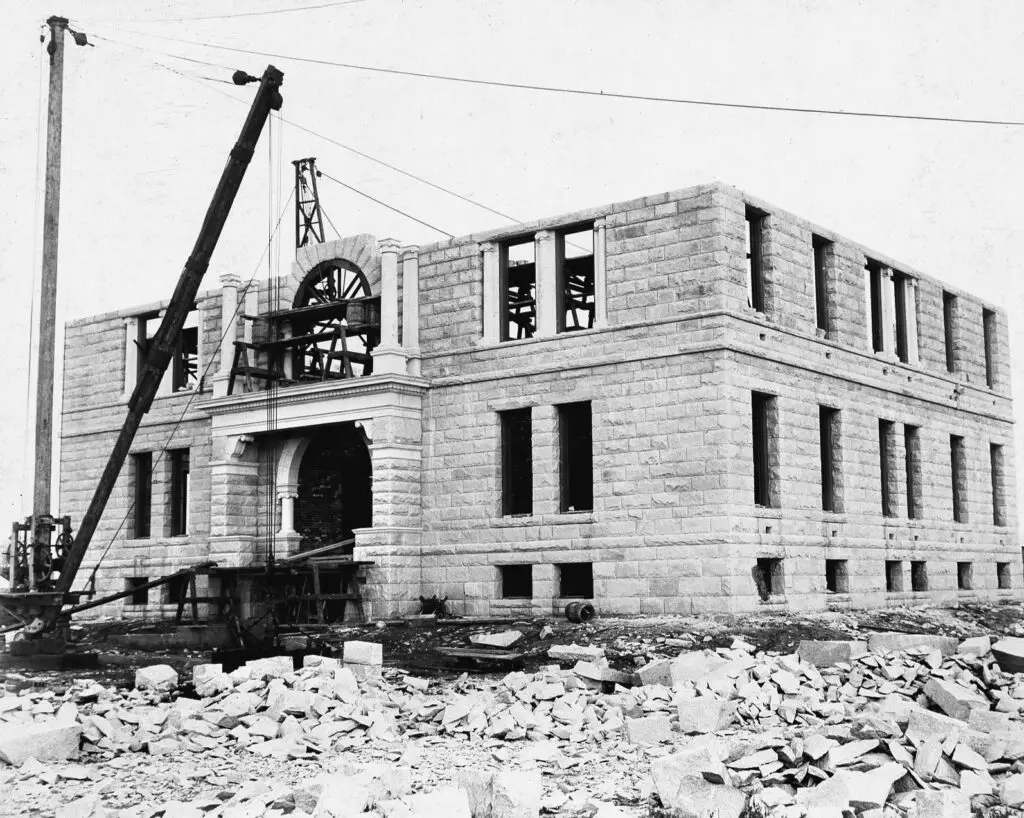
Huge blocks of Raymond granite dotted the landscape during the construction of the courthouse. Raymond granite was known throughout the Unite States. It was used to help rebuild San Francisco after the 1906 earthquake and fires.
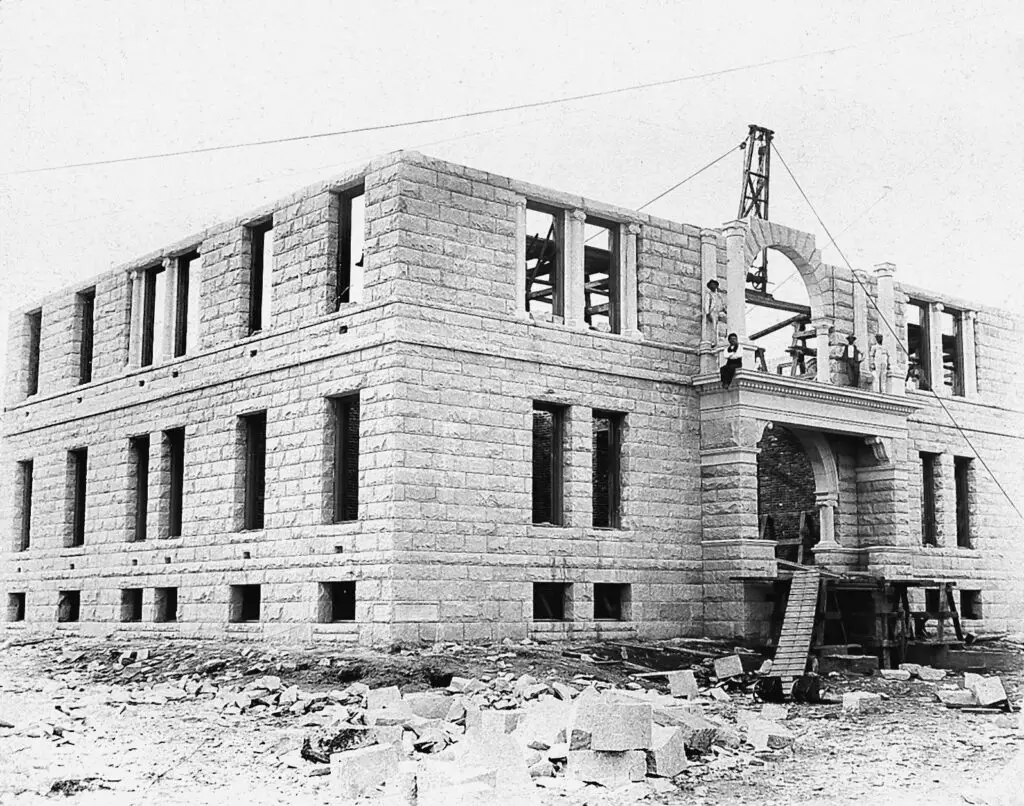
Raymond granite can also be found in buildings in Sacramento, Los Angeles, Salt Lake City, and Dallas, just to name a few. Maderans pointed with pride to the fact they didn’t have to leave the county to obtain this popular building material.
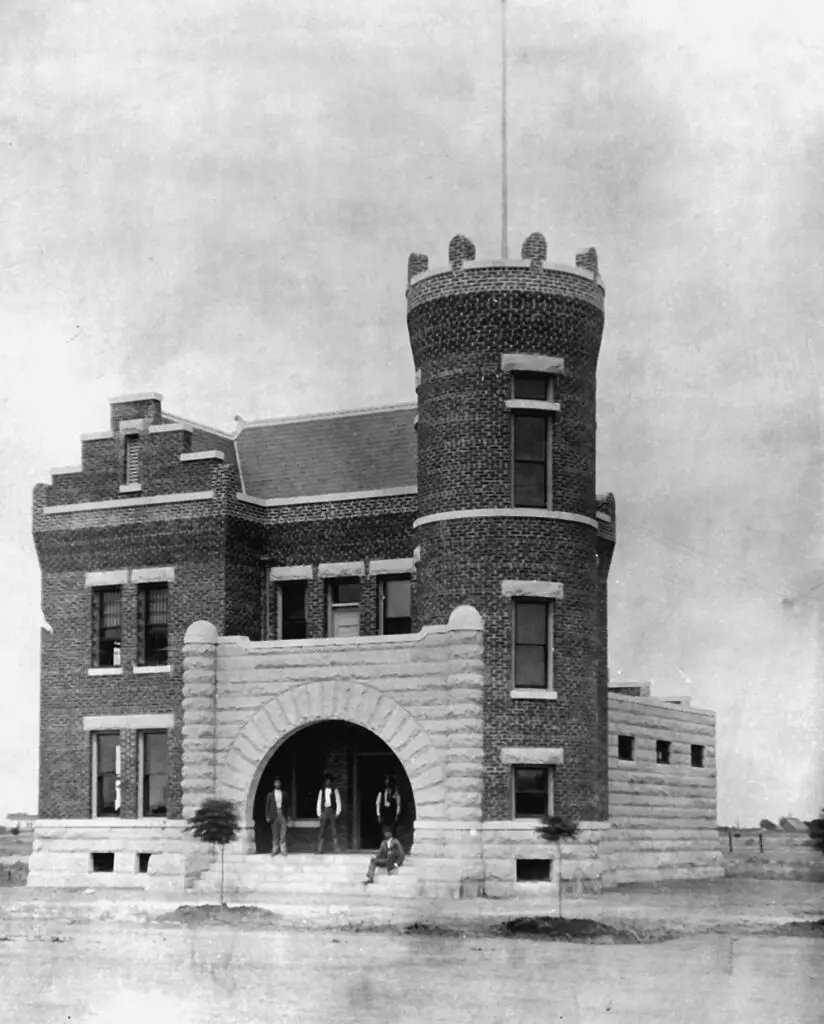
Madera County’s beautiful new jail was built in 1888 and looked even more impressive when the granite courthouse was constructed on the same lot. One of the first inhabitants of the new jail was Leonard Hammond who had been charged with robbery. He was also the first to try to escape from the jail when he worked one of the bricks loose and hit Deputy Sheriff Ervine E. Lewis over the head and took his gun. As Hammond was leaving the jail, he met Sheriff W.B. Thurman, and a fierce gun battle erupted on the front steps. The holdup man was able to nick the sheriff in the hand but suffered severe wounds himself. Shown here in this 1900 photograph, from left to right, are Sheriff Thurman, Deputy Sheriff Lewis, and two unidentified men.

In this 1900 photograph, the courthouse is under construction behind the new jail. This area was considered to be “out in the country” at the time, although now it sits in a congested area between Highway 99 and the old Golden State Highway.

